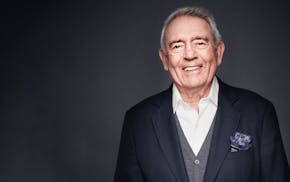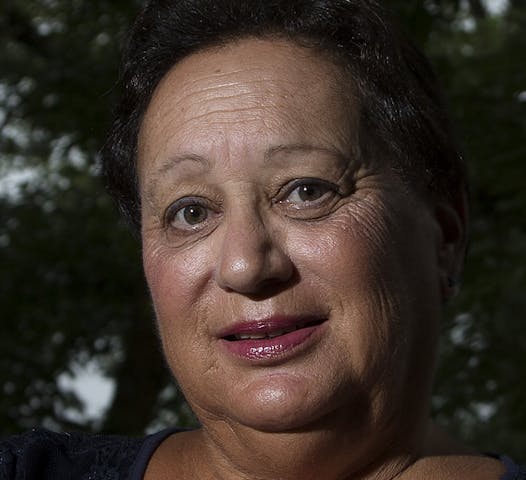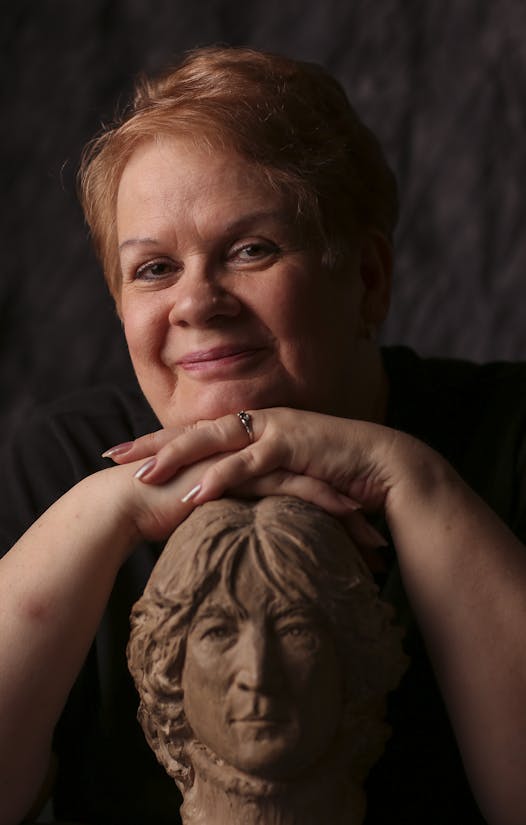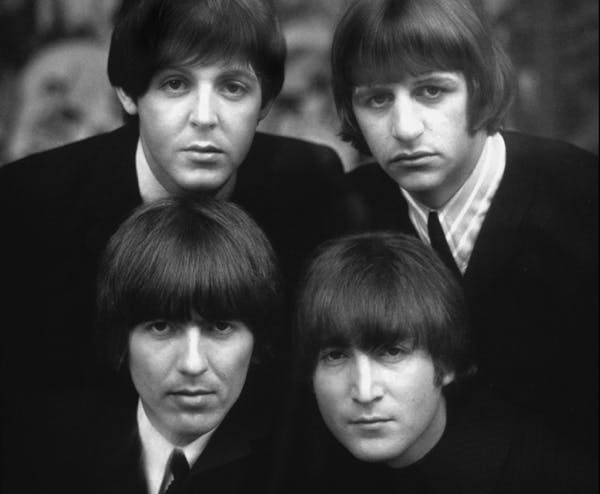The anticipation was unprecedented. Mail away for tickets. One of only 10 cities on the tour. Make a poster declaring your love for John, Paul, George or Ringo. Get your parents to drive you there.
So what if there were maybe 12,000 empty seats at the 40,000-capacity Twins stadium. So what if there were four opening acts you'd never heard of. So what if the world's greatest band was using the inadequate Twins sound system and performed for a mere 30 minutes.
Fifty years ago today, the Beatles landed at Met Stadium in Bloomington. About 3,000 fans met the Beatles at the airport. Then came the WDGY-staged news conference at the stadium for which some 150 media people (and plenty of their children) showed up.
This was the heyday of Top 40 — the Beatles, Motown, the Byrds, Herman's Hermits, Sonny & Cher — before psychedelic rock turned young people on, before albums became currency, before concerts became a big-time industry.
The Fab Four are long gone (John and George are dead) and Met Stadium, too, abandoned by the Twins and Vikings in 1982 and demolished three years later. The Mall of America, which has a home plate commemorating the Met, stands there now. But the memories remain. Here are the recollections of four folks who were there.
The promoter's assistant
When you're 20, you do whatever task your boss tells you to do. For Don Powell, that meant one day operating the Ferris wheel at Excelsior Amusement Park and the next meeting the Beatles on the tarmac when they arrived to play at Met Stadium.
"There were these two girls who were very adultish and blasé about the whole thing and they had some deal with a local small-town newspaper," recalled Powell, who helped coordinate the preconcert news conference that day. "Naturally, I bought it. The plane lands, they roll out the stairs and the first one off is John [Lennon], and these girls break for the stairway and one of them tackles John on the third step. My first hour and I'd already screwed things up."
Powell helped get the Beatles into the limos, on to Met Stadium, the news conference and the concert.
"The stadium was half sold, and they weren't very good," Powell reflected. "But it didn't matter because nobody could hear them anyway. I liked the fact that King Curtis [the saxophonist, who was an opening act] was on the show."
Beatles manager Brian Epstein liked Powell's performance enough to invite him to be part of the Beatles' advance team for concerts in Portland, Ore., and San Diego.
Powell got to spend some time with the Fab Four. "I liked John the best; for that age, he was clever and witty. Ringo was a cool guy. Paul was a party boy, and George was introspective and didn't say much."
The following year, Powell helped put together a tour for Stevie Wonder and served as his manager for several years. He also worked with David Bowie and managed and produced the Jets, a Twin Cities band of siblings that had the mid-1980s hits "Crush on You" and "You Got It All."
Based in Minnetonka, he's now producing and managing a European a cappella group.
The Beatlemaniac
Barb Fenick still has her ticket stub, the Sunday Minneapolis Tribune from Aug. 22, 1965, and all kinds of magazine clippings.
"I was obsessed about the Beatles," she said. "I wouldn't have missed that concert for the world. It was fun. It was disappointing, too, because we weren't that close to them. I was sitting in the front row, but it didn't make much difference because they were on second base. My goal was to get closer."
She did. First at a concert in Chicago, then outside Abbey Road studio, where the Beatles were recording in London in 1969. She met all four Mop Tops and even went to Paul McCartney's house once.
Fenick was so obsessed that in 1966, at age 15, she started a Beatles newsletter using the mimeograph machine at Highland Park High School in St. Paul at the encouragement of a teacher who had a photo of Ringo Starr on his bulletin board. ("He didn't like the Beatles; he just thought Ringo was funny looking.") She also started a Beatles fan club: Father Lennon's Many Children (which was eventually renamed the Write Thing).
For 20 years, Fenick made a living publishing the Write Thing magazine four to six times a year and running the fan club, which peaked at 2,000 members. She even gave copies of her magazine to McCartney in the late '70s. Over the years, she attended about 40 Beatles conventions and, in the 1980s, published two volumes for "Collecting the Beatles," a pre-Internet guide to Fab Four collectibles.
In 1986, Fenick stopped writing the Write Thing and practicing Beatlemania. Her second child was born and her Beatles room became her son's bedroom. After seeing McCartney in concert in 1993, she gave up going to see him.
"The tickets are out of my price range," said the Roseville grandmother of four. "Plus, I'm spoiled. I saw Wings in England and St. Paul in the front row."
The fan
She heard the songs on the radio and then saw the Beatles on "The Ed Sullivan Show" and "that was it," said Kathy Burns. Somehow the 14-year-old convinced her parents to drive her and a friend from Crystal to Bloomington for the Fab Four's concert.
"I remember we sat through what seemed liked hundreds of opening acts, even though there was probably only three," she said. And then when the Beatles finally came on, "it was so quick. Only about a half-hour. The only song I remember seeing is 'I'm Down.' "
The next year, Burns sent a letter to John Lennon's aunt, Mimi Smith, who raised him in England. She responded, and they corresponded for years. They met in 1973 when Burns went to England. In 1981, the year after Lennon was murdered, Aunt Mimi summoned Burns, a visit that coincided with a U.K. wedding to which the Minnesotan was invited.
"I spent a week with her," said Burns, now retired from the accounting business in New Hope. They stayed in touch until Smith died in 1991.
"I had friends who knew I'd written to Aunt Mimi and they kept telling me to publish the letters," said Burns, who self-published "The Guitar's All Right as a Hobby, John" in 2014. "I'd read a book by John's first wife, Cynthia, and his sister and they treated her like she was the Wicked Witch of the West. She isn't anything like that in my book. Maybe she was real strict to John, but not to me."
Even though Burns' musical interests eventually shifted to Rod Stewart, Bruce Springsteen and Billy Joel, she still gets props for going to Met Stadium on that August afternoon.
"The older I get," she said, "the more impressed people are that I saw the Beatles."
The usher
He was stationed at the gate that led to the dressing rooms at Met Stadium. When John, Paul, George and Ringo walked by him single file, "Abbey Road"-style, first-year Twins usher Randy Levy thought to himself: "That's the Beatles. I hadn't put two and two together."
After the Fab Four made their way to the stage on the baseball field, Levy, 16, left his post and found a spot in the stands to witness Beatlemania.
"The screaming crowd was louder than the P.A. [public address speakers] at the stadium," he recalled. "You really couldn't hear the music."
Back then, Levy says, he didn't know a lead guitarist from a bass player but he was struck by one thing: "What an incredibly short set. Poof! They're gone."
Since his father was a pro wrestler in the 1960s, Levy was accustomed to being at what he called "big events."
As for the Beatles' big show, Levy didn't find it life-changing. "I liked it," he said. "But it wasn't 'I gotta do this.' "
However, after he got out of the Army several years later, he began booking local bands with a buddy. That eventually led to a five-decade career as a concert promoter, presenting nearly every big name imaginable — the Rolling Stones, the Eagles, Bruce Springsteen, Rod Stewart, Prince and even Frank Sinatra — but not Paul McCartney, the most popular ex-Beatle.
Oh, Levy did book Ringo Starr once — as part of We Fest, the hugely popular country-music festival in Detroit Lakes. Of course, by then, outdoor sound systems had become an industry unto themselves.
Twitter: @JonBream • 612-673-1719
Paris has a new king of the crusty baguette with the 31st winner of its annual bread-baking prize.
What to know about Zyn, the tiny nicotine pouch that's sparked a big health debate

Home listings: What $565,000 buys you in the Twin Cities area







